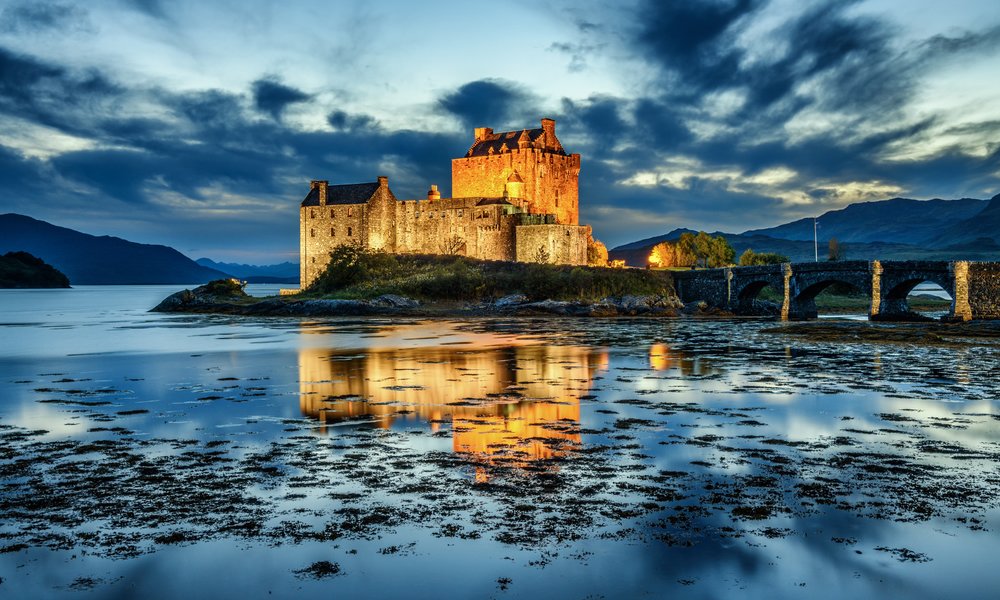Dunnottar Castle
Dunnottar Castle is an imposing medieval fortress located on top of an impenetrable headland near the fishing village of Stonehaven in northeastern Scotland. One of a handful of sea cliff castles to be found dotted along the north sea, it is now a ruin. It has played a prominent role in Scottish history from an early Pictish settlement in the 400s through to the Jacobite risings in the 1700s and today is one of Scotland’s most visited castles.
Given Dunnottar’s natural defensive position it is no surprise to learn that it has been home to fortifications of one sort or another for at least the past two thousand years. “Dun” is the ancient Pictish word for fort and it is believed that a Pictish fort stood on the site in the late 400s when Saint Ninian came to Dunnottar during the Cristian Crusades, converting the Picts to Christianity and founding a chapel on the site.
Around 1300 the wooden fortification at Dunnottar was replaced by a stone keep and defences by Sir William Keith. By 1531 Dunnottar was declared to be “one of the principal strengths of our realm”. It was granted to the now defunct Earls Marischal of Scotland by King James V.
By May 1652 Scotland was under military attack by Cromwell’s army. Many other castles had fallen and Dunnottar was considered the only place left in Scotland holding out for Charles II. Parliamentary forces were particularly keen to take the castle because it was being used for the safe keeping of the Honours of Scotland, the Crown Jewels (that are now on display at Edinburgh Castle) and of Charles II’s documents and laws.
On 26 May 1652, after an eight month siege, the castle eventually surrendered but Cromwell found the castle empty, the King’s papers having been smuggled through their lines hidden in the clothing of a woman, and the Honours having been lowered down the cliffs to a local woman pretending to be collecting seaweed and hidden under the floor of the nearby Kinneff Old Church.
Dunnottar’s darkest moment came in May 1685 when 167 Covenanters (religious exiles) were imprisoned in the Whig’s Vault below the Quadrangle of the castle. Some died of starvation and disease, others executed after trying to escape. Those who survived the grim conditions were put on slave ships to the Americas and sold.
By 1715 the Jacobite movement to place James Stewart back on the throne had divided the nation. The tenth Earl Marischal backed the losing side in the Jacobite uprising and was condemned for treason by the British Government. His estates were forfeited and Dunnottar Castle was sold to the York Building Company, who removed everything of value. However, as fate would have it Dunnottar’s location proved to be its saving grace one last time as the stone was not considered to be commercially salvageable and the building was abandoned.
The ruins were purchased by the Cowdray family in 1925 and the 1st Viscountess Cowdray embarked on a complicated and difficult restoration programme, buoyed by the Since then the castle has remained in the family, and has been open to visitors.
Dunnottar Castle
Dunnottar
By Stonehaven
AB39 2TL
Open year round with some seasonal variation

